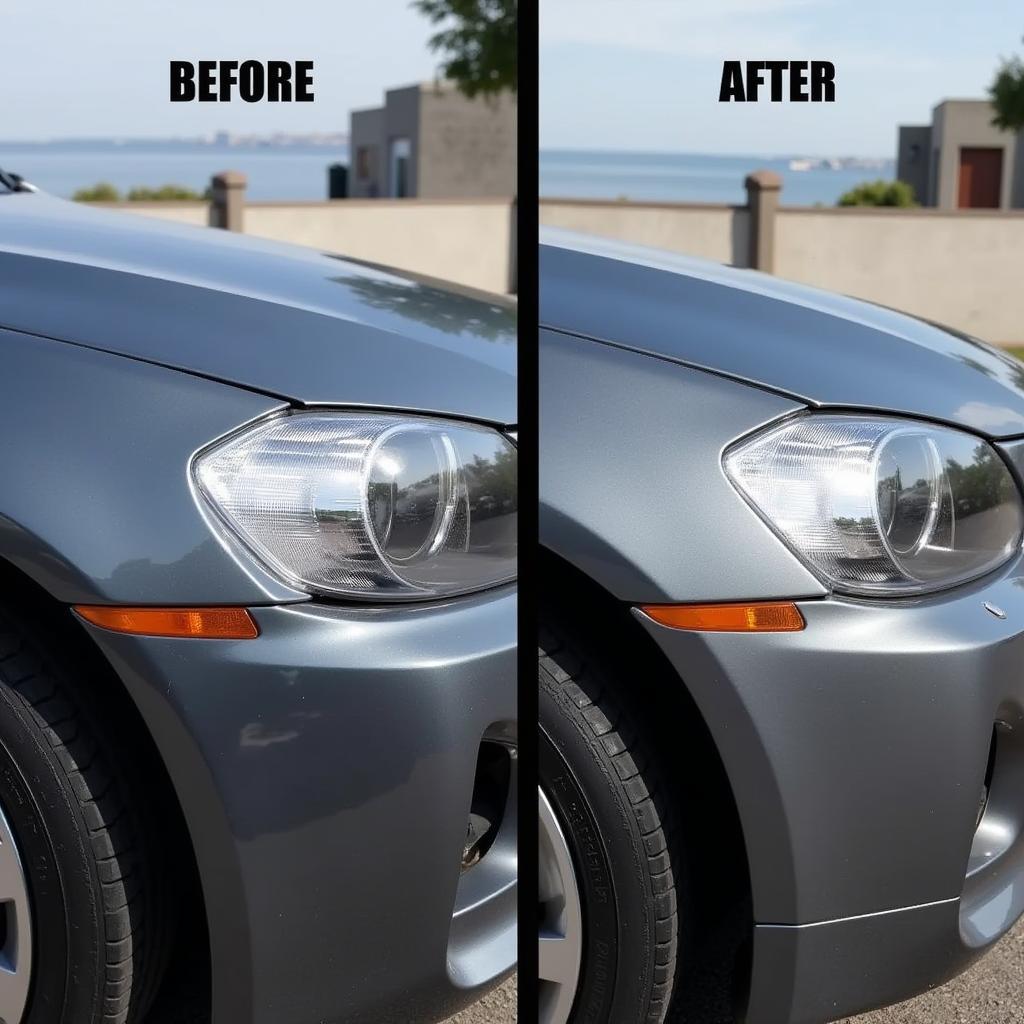Choosing the right car detailing compound can mean the difference between a good and a truly professional finish for your vehicle. Whether you’re removing swirl marks, scratches, or just want to restore that deep shine, finding the Best Car Detailing Compound for your needs is essential.
Understanding Car Detailing Compound: What Does It Do?
Car detailing compound is a slightly abrasive product designed to remove imperfections from your car’s paintwork. It works by gently “cutting” away a very thin layer of the clear coat, taking imperfections with it. This process, often referred to as “paint correction,” leaves a smooth and shiny surface ready for waxing or sealing.
Different Types of Car Detailing Compounds
There are different types of car detailing compounds, each with a different level of “cut” or abrasiveness:
- Heavy Cut Compounds: These are the most aggressive and best for deep scratches, severe swirl marks, and oxidation. However, they can remove a significant amount of clear coat, so use them cautiously.
- Medium Cut Compounds: These offer a balance between cutting power and finesse, suitable for moderate imperfections and swirl marks.
- Fine Cut Compounds (Polishes): These are the least abrasive and ideal for removing light swirl marks, holograms, and restoring shine.
Choosing the Best Car Detailing Compound: Key Factors to Consider
Navigating the world of car detailing compounds can be daunting, but considering these factors can help you make the right choice:
- Severity of Imperfections: Assess your car’s paint condition – heavy scratches need heavy-cut compounds, while light swirl marks require finer options.
- Paint Type: Different paint types have varying levels of hardness. Softer paints need less aggressive compounds.
- Experience Level: If you’re a beginner, start with a less abrasive compound to avoid damaging the paint.
- Machine or Hand Application: Some compounds are specifically designed for machine use, while others are better suited for hand application.
- Desired Finish: Are you aiming for a show-car shine or just want to remove minor imperfections?
Top Tips for Using Car Detailing Compound
- Work in a cool, shaded area: Direct sunlight can cause the compound to dry out too quickly.
- Wash and dry your car thoroughly: Remove any loose dirt or debris before applying the compound.
- Use the right tools: A dual-action polisher is recommended for beginners, while rotary polishers offer more power but require experience.
- Work in small sections: Apply the compound to a small area at a time to prevent it from drying out.
- Use light pressure: Let the compound and the machine do the work. Too much pressure can damage the paint.
 Before and After Car Detailing Compound
Before and After Car Detailing Compound
Beyond the Compound: What’s Next?
After using a car detailing compound, it’s essential to protect the freshly polished surface. This involves:
- Polishing: Use a finishing polish to remove any remaining haze and maximize gloss.
- Waxing or Sealing: Applying a wax or sealant provides a protective layer against UV rays, water spots, and other environmental contaminants.
By understanding the different types of car detailing compounds and how to use them effectively, you can achieve professional-looking results and keep your car looking its best.
Frequently Asked Questions
Can I use a car detailing compound on all types of paint?
While most car detailing compounds are safe for use on clear-coated vehicles, it’s essential to check the product label and research its compatibility with your specific paint type.
How often should I use a car detailing compound?
The frequency of use depends on factors like your car’s usage, environmental exposure, and the severity of imperfections. As a general rule, once or twice a year is sufficient for most vehicles.
What’s the difference between a car detailing compound and a rubbing compound?
Rubbing compound is a more abrasive product designed for severe paint defects and is typically used before a detailing compound for finer correction.
Can I apply a car detailing compound by hand?
While hand application is possible, using a dual-action or rotary polisher provides better results and reduces the risk of uneven application.
What should I do if I accidentally remove too much clear coat?
If you remove too much clear coat, it’s best to consult a professional detailer or auto body shop for advice on repairing the paintwork.
Need personalized recommendations for the best car detailing compound for your vehicle? Check out our detailed reviews and comparisons of the best car detailing polisher and products to find the perfect match.
Remember, a little knowledge and the right products can go a long way in achieving a showroom-worthy finish for your car!

Leave a Reply